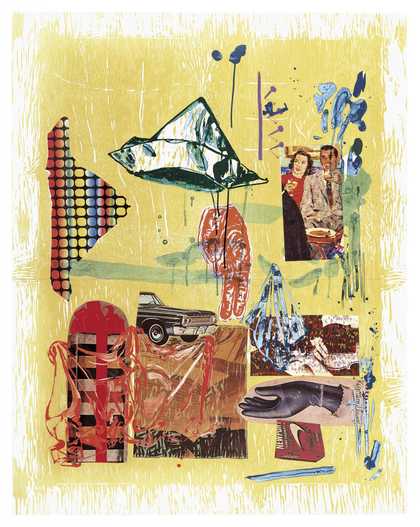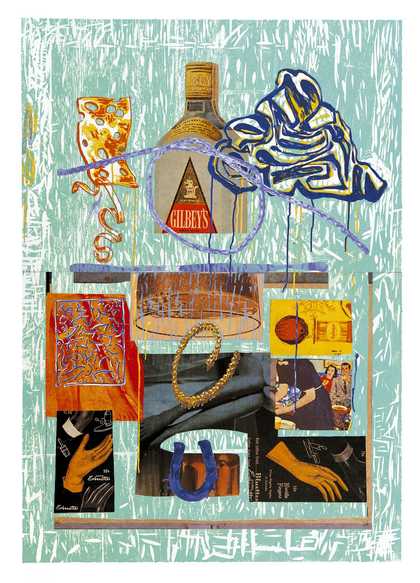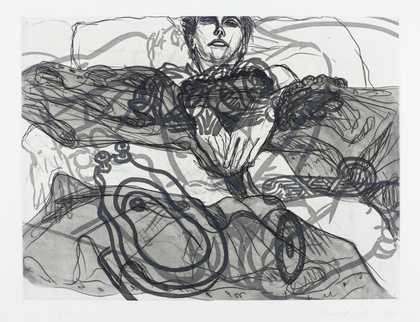From his New York studio David Salle talks about the combination of images and pictorial languages that go into one of his multi-layered paintings; and explains how his interest in exploring the body in space has led him to paint the bodies of his models and have them physically lifted onto his canvases to leave an imprint.
My name is David Salle. We’re sitting in my studio in Fort Greene, Brooklyn.
I’ve always been a figurative painter. I was making paintings populated by people in interior spaces when I was a kid and in a way I have been making the same painting ever since I was 14.
When I was younger I was hungry for a kind of dialogue that centred around intention and meaning and interpretation and things like that. Now I find as I’m older I’m just interested in the first level reaction; yes, no, good, not good, finished, unfinished. I always start with the complete frame of reference, which is to say the large canvas. The paintings are made of, sometimes they’re made of a large panel with smaller panels inset into them. I’m not even sure why, but for some reason it makes a difference that there are separate panels that are actually set into windows cut into the painting. They’re not simply applied on top. The inset panel sometimes function as a punctuation.
I don’t plan out the works in advance. I have a vocabulary of images and motifs that I’m working with at any given time in the work and I know that I want to bring those things into some kind of alignment but I don’t know ahead of time what exactly that alignment’s going to be.
I’m pairing the word or the phrase with a figurative element, a very strongly painted figurative element and another element which is, in this case, a silk screen made from a photograph I took in this context and I think of it as joining abstraction and figuration and language, those three elements.
I’m interested in seeing the body in space in a way that we don’t normally encounter it. I’m interested in the effects of gravity and so, you see these poses of the model turning and twisting and pulling herself up or down. I don’t even know what these people are doing; they’re just doing some funny gestures which I thought was kind of an interesting starting point. It was carefully choreographed. We had to lift these people up and set them down in precisely the right place on the canvas and then, because they couldn’t get up because they’re covered with paint, we had to then pick them up again and set them down on the floor. So, it was a really kind of a hilarious parade of people coming in and out of the shower and being painted and being printed.
I think that this, why does this painting work, or rather why do I think it works rather, is to create a path for your eye to take through the painting. Then, this painting it’s your eye keeps circulating around in a kind of figure eight then back again and then into deeper space and then back to the surface of the canvas.
I think a good painting is something which has immediate impact and at the same time is something which rewards a longer, prolonged viewing time and the longer you look at it the more interesting it becomes, but it can also always go back to that starting point of just great immediacy and that’s something that’s very satisfying. And, if it’s only one or only the other I think it’s missing something.





